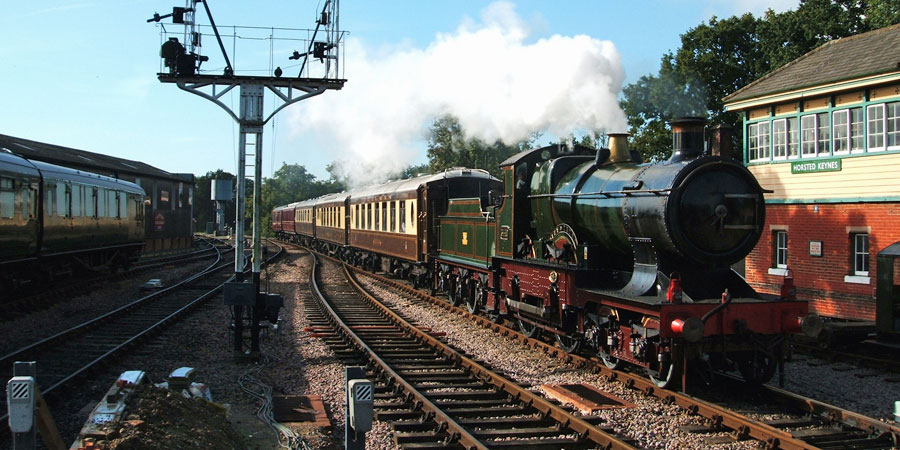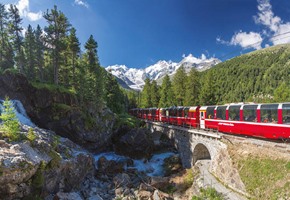This March 8th, in honour of National Women's Day, (which this year is all the more pertinent as 2018 marks the centenary of votes for women) we are celebrating the role women have played over the generations in the creation and maintenance of our railways. Railway lines have long been a vital component of society, from transporting goods to people and, as the recent weather has taught us, it doesn't always take much for them to come grinding to a halt. To combat everything from thieves stealing metal from the tracks, to signalling problems calls for an expert team of railway engineers, station managers and many more, and women have played pivotal roles in all of these throughout history. Here are some of the most surprising things you might not have known about a woman's place on the railways.
1) At the turn of the 20th century, some of the first jobs deemed suitable for women were as level-crossing gate keepers, a role that could fit in with family life. Usually the position would only be given to a widowed woman who had children to support and it often included rent free accommodation as part of the remuneration package. However, there were other jobs behind the scenes that, while not given as many accolades as what was considered to be the more technical work of men, would've been sorely missed by passengers. Such as comfortable carriages whose upholstered seats were entirely produced by a skilled female work force.
2) Following the outbreak of World War One, women had the chance to step into the shoes of men for the very first time, taking on a number of fundamental positions across nearly every industry in order to keep the country up and running during a time of intense conflict. However, on the railways one of the few jobs that remained 'protected' (meaning that men could choose to stay in these jobs instead of joining up, and wouldn't be penalised by the government for being a contentious objector) were train drivers. The training process was believed to be too long and arduous for a woman to complete before our boys got home. Despite this however, the number of women working on the railways between 1914 and 1918 swelled from 9,000 to a whopping 50,000. Following the signing of the armistice though, it was considered only proper for gender roles to return to how they had been before the outbreak of war.
3) This fact is less about women's influence on the railway network, and more about the bizarre theories in which the railways were supposed to affect women, specifically they're reproductive organs - something that had long baffled and terrified men. New technology has often drawn dubious detractors, it's still not uncommon for people to be superstitious about flying for example, and early theories about the negative impact such high-speed travel could have on the female anatomy included; 'women's bodies were not designed to go at 50 miles an hour, the uteruses of female passengers will fly out of their bodies if accelerated to that speed.' Yes, really.
4) British Rail, though it wasn't yet known by that name, was one of the very first companies to offer (almost) equal pay for equal work. Up until 1915, women who worked the same jobs as men could expect to receive just two-thirds less in wages, but accepting women into the National Union of Railwaymen meant that they could demand fairer pay conditions on their behalf. Following negotiations it was agreed that women would be allowed to earn the minimum wage for doing the work of a male counterpart.
5) Sadly it took yet another World War for women to experience a new golden age of emancipation in terms of employment outside of the home. There was less resistance this time around to what women would be able to achieve and accomplish, and we are still grateful to this day for the herculean efforts and sacrifices made not only by servicemen and women, but also by those who fought a much different battle on the home front. It has been over 70 years since Victory in Europe Day, but in 2018 there is still a large gender disparity when it comes to STEM professions, and the railway industry is far from immune. In 2016 it was measured that only 16% or roles on the UK network were occupied by women, and these were more often than not in service or administration positions, 0.6% of executive jobs are held by women. There is change in the air though, and in 2012 an initiative was launched called 'Women in Rail' which aims to educate men and women about the future of female engagement and education in these underrepresented vocations.
So this March 8th, we want to say a great big thank you to all the women, and men who've supported, mentored and encouraged them, who have and continue to work hard just so we can enjoy a relaxed and comfortable journey, free from the fear of our uteruses falling out.





